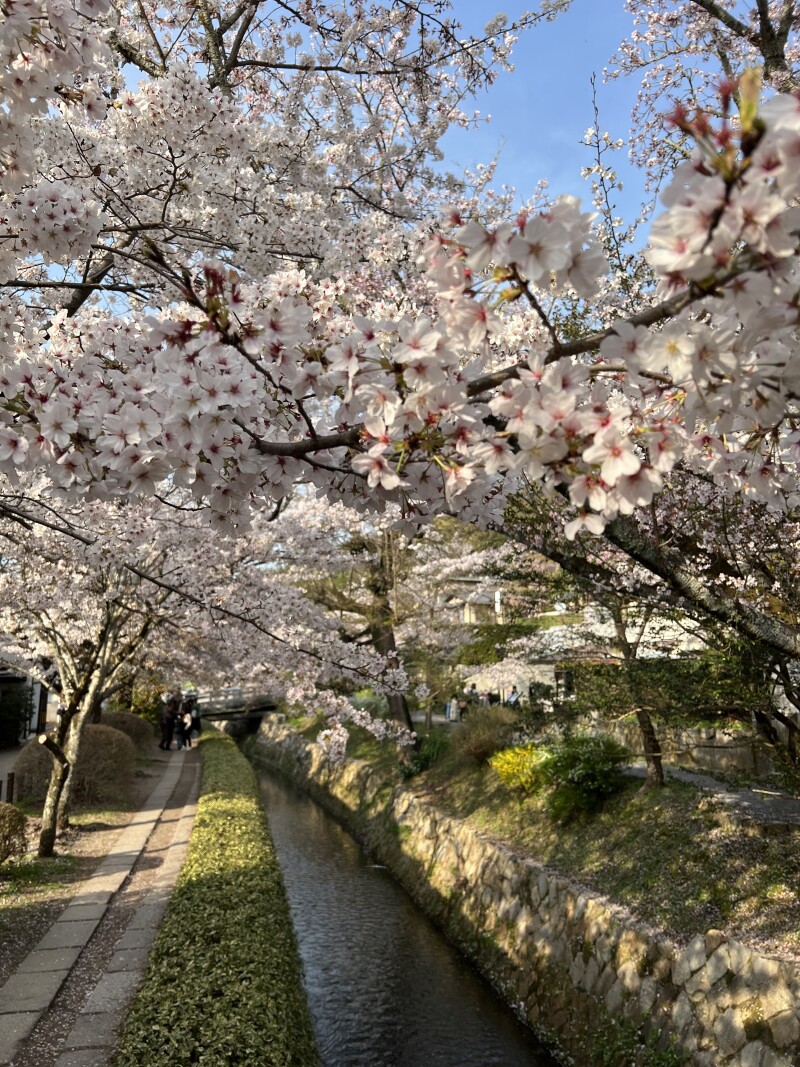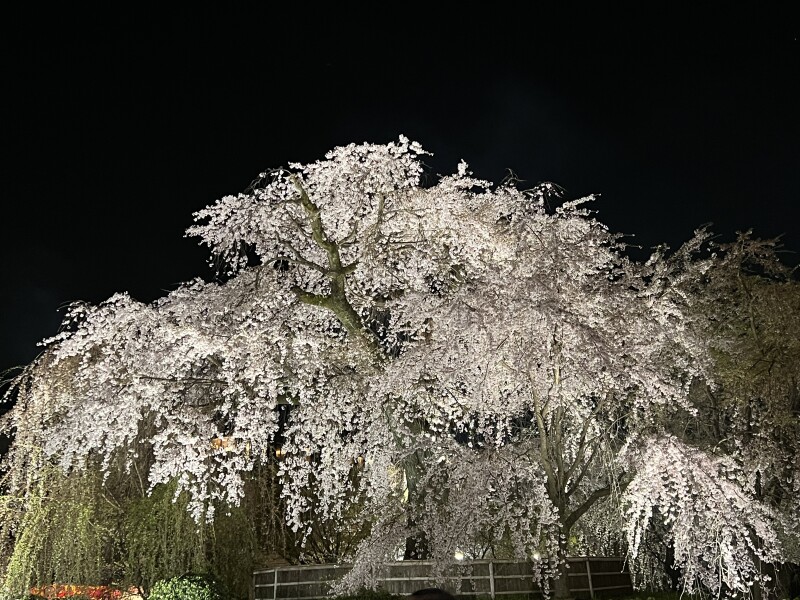There’s a book that has a special place on my bookshelf called How to Be More Tree by Potter Gift. It’s long been one of my favorites—I love the idea that we can learn from these plants that we often take for granted, and since my recent travels to Japan, I have felt more keenly than usual how very much we benefit from trees.
I went to Japan specifically at this time of year to see sakura, the cherry tree blossoms that bloom at the end of March and early April. Many other travelers, including natives, were in pursuit of the same thing. Whether groups of friends or families were picnicking under the trees or strolling through the Japanese gardens, everyone was excited to see the blossoms in full bloom. It seemed that the awakening of the trees had awakened the people themselves, and the world felt more hopeful now that spring had come in earnest.

I’ve often thought about the significance of trees and the part they play in our lives. As the website Plant with Purpose puts it, “Trees are vital for all forms of life on our planet,” and they provide “spiritual and aesthetic enrichment.” Trees are also often mentioned in the scriptures. The tree of knowledge of good and evil and the tree of life in the Garden of Eden have had great significance in the history of mankind. And the allegory of the olive tree in Jacob 5 teaches us important doctrinal truths.
But there are many other trees mentioned in the scriptures that have spiritual lessons we can learn from. Here’s a look at three of them that have inspired me recently. I hope that as we ponder these verses, we will consider doing as my book suggests and think of ways to be a little more tree.
The First Trees
In Moses 3, before we read about the tree of life or the tree of knowledge of good and evil, we read about other trees that God created. In verses eight and nine, it says,
“And I, the Lord God, planted a garden eastward in Eden, and there I put the man whom I had formed.
“And out of the ground made I, the Lord God, to grow every tree, naturally, that is pleasant to the sight of man; and man could behold it. And it became also a living soul. For it was spiritual in the day that I created it; for it remaineth in the sphere in which I, God, created it, yea, even all things which I prepared for the use of man; and man saw that it was good for food. And I, the Lord God, planted the tree of life also in the midst of the garden, and also the tree of knowledge of good and evil.”
While the many trees God created are not mentioned here by name, we know their characteristics: they were both beautiful to behold and a good source for food. They also had a living soul.
Previously, I had never paid much attention to these trees as they didn’t seem to play a significant part in the story of Adam and Eve. But now, I’m impressed by how much those trees really mattered—being a constant source of good food is no small thing. And from the very beginning, they grew from the ground under God’s direction and contributed in their sphere as God intended.
We can be a little more like these trees by growing under the direction God gives us. As we constantly strive to follow Him and fulfill our greater purpose, we will find that we play a significant part in the plan of salvation and have beautiful contributions to offer.
The Apple Tree
Another tree mentioned in the scriptures is the apple tree, which can be a beautiful symbol of God’s love. In Song of Solomon 2:3 we read, “As the apple tree among the trees of the wood, so is my beloved among the sons. I sat down under his shadow with great delight, and his fruit was sweet to my taste.”
Before analyzing this verse, let’s briefly consider the history of the apple tree. According to the University of Pennsylvania, the ancestor of the apple tree originally comes from the Tian Shan mountains in Kazakhstan, where they still grow today. Apple seeds were transported out of the area by birds and bears before humans ever cultivated apple trees. Eventually, apple trees grew in Syria, where they were discovered by the Romans, and the fruit was further dispersed around the world.

Apples may be common to us today, but they used to be a rarity—the wording in Song of Solomon suggests it may have even been exciting to come across an apple tree because the fruit was sweet, and the shade its leaves provided gave great delight. It also stood out among all the other trees in the wood.
I like to think of the apple tree in two ways: First, I see the tree as a symbol of Christ. The fruit that He provides is sweet to our taste as we find hope and redemption through His atoning sacrifice. And just like the shade of the apple tree, He is always waiting for us to find rest in Him. Second, I consider the apple tree to be a representation of the gospel. Christ, like those apple trees on the mountains in Khazakstan, is the original source. But over time, His gospel, like the fruit of the apple tree, has spread throughout the world.
Let’s be a little more like the apple tree by following its example and patiently sharing the light of Christ and the fruits of the gospel. We don’t need to be afraid of being a different sort of tree among the others in the wood because we know how sweet and precious the gospel is. And when others are weary, we can provide comfort along their journey the way Christ would, giving them shade to rest under our branches.
The Sycamore Tree
In Luke 19, we read the story of Zacchaeus, a rich man who was chief among the publicans who wanted to see Jesus among the crowd. But Zacchaeus was small of stature, so he “climbed up into a sycomore tree to see him: for he was to pass that way” (Luke 19:4).

When Jesus came to the place where Zacchaeus was, He told him to hurry and come down, and that He would “abide” in Zacchaeus’s house. But the people weren’t happy with Christ’s reaction, saying that Zacchaeus was a sinner. Why did they have that perspective? Taylor Halvorsen and Scott Haines describe it this way:
“Zacchaeus was one of the chief tax-collectors, or publicans, of Jericho. During this period of Roman domination, enterprising individuals could receive contracts to collect taxes from the people on behalf of the Roman Empire. The contract allowed the tax-collector to keep the excess taxes collected. Taxes and tax collectors are considered odious in all time periods, so it is no surprise that the Jews of Jericho disliked their fellow Jew, Zacchaeus, who benefited from the hated Roman occupation. … Because Zacchaeus was a tax-collector the people judged him through a very narrow lens, but God sees people differently.”
Unlike those in the crowd, Jesus gave Zacchaeus a chance and saw him for who he really was. But I also like to think about the sycamore tree in this story—what role does it play?
Suppose there had been no tree for Zacchaeus to climb when he knew that Jesus was coming. Perhaps there wasn’t time to climb anything else and he was simply lost in the crowd, unable to see Jesus when he desperately wanted to. I believe that Christ would’ve been aware of that, and He would have found Zacchaeus anyway. But the story didn’t turn out that way because the tree was there. When no one in the multitude saw Zacchaeus as anything more than a sinner, the tree became his only support so he could get closer to the Savior. And in that moment, that was what Zacchaues needed more than anything.
Just like this sycamore, may we see others for who they truly are and be a support to them when they need it most—especially when they may not receive it from anywhere else. If we do so, we will find that by elevating others so that they have a better view Christ, we will be there right along with them. And as a result, we will have the blessing of being closer to Christ ourselves.
▶You may also like: 5 quotes from Bishop Caussé on the importance of earthly stewardship


